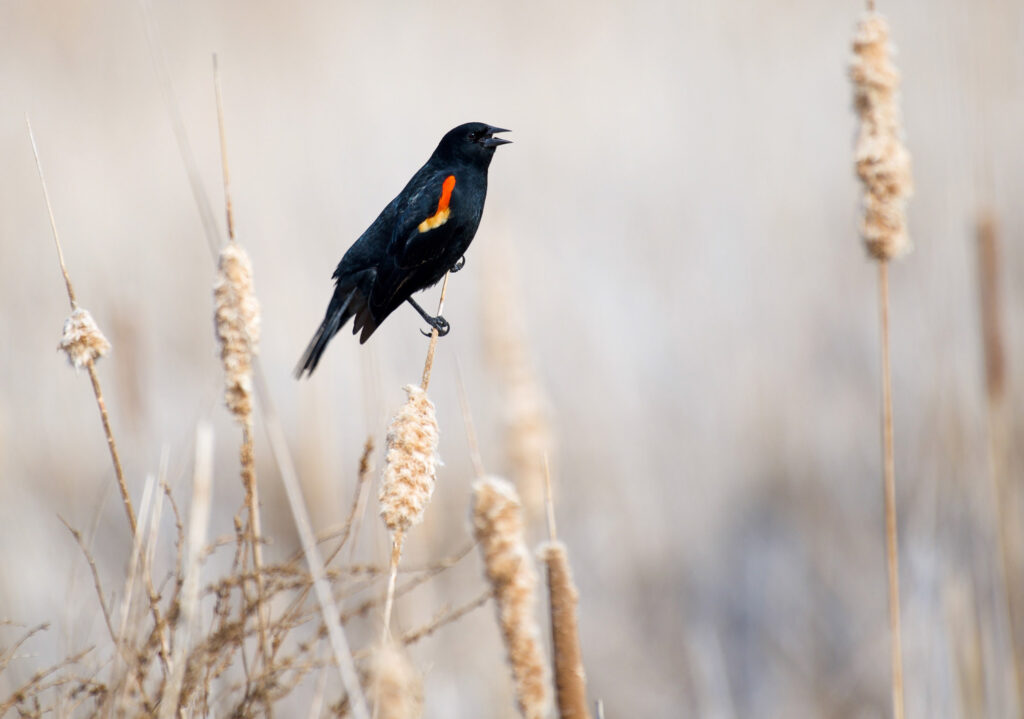RED-WINGED BLACKBIRD, SOUND, FUN FACTS, MIGRATION, DIET, FLOCK, FEMALE
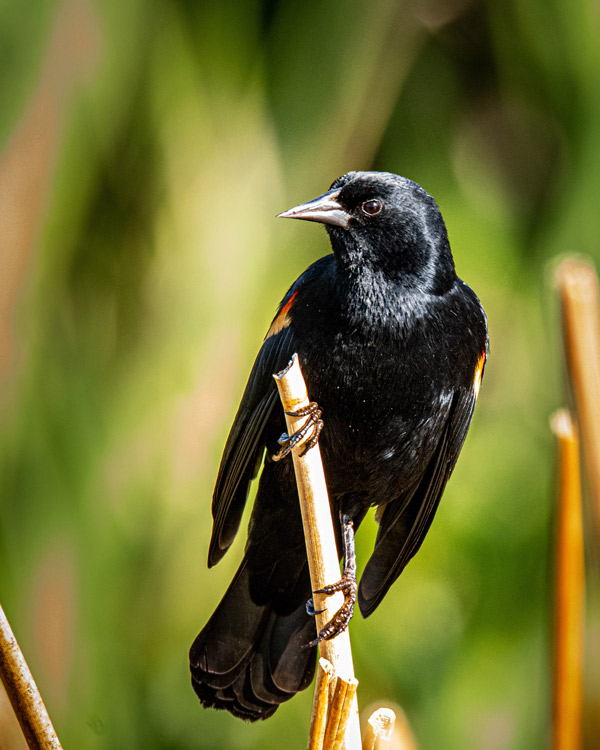
The Red-winged Blackbird (Agelaius phoeniceus) is a species of passerine bird found in North and South America. They are known for their striking plumage, with males having glossy black bodies and bright red and yellow epaulettes on their shoulders. Females have more brown colours.
HABITAT
Red-winged Blackbirds are found in a variety of habitats, including marshes, wetlands, and grasslands. They are also commonly found in agricultural areas, such as fields and wetlands near farms.
They are known to be very adaptable and can thrive in both natural and human-altered environments.
SOUND
One of the most notable characteristics of Red-winged Blackbirds is their vocalization. The male has a distinctive, loud, and complex song that can be heard for miles.
It is often described as a series of loud, clear whistles, with a descending pitch at the end. This song is used to defend their territory and attract a mate.
TERRITORIAL
Red-winged Blackbirds are also known for their aggressive territorial behavior. During the breeding season, males will defend their territory against other males and even attack other birds and animals that enter their territory.
They are also known to be aggressive towards humans who get too close to their nests.
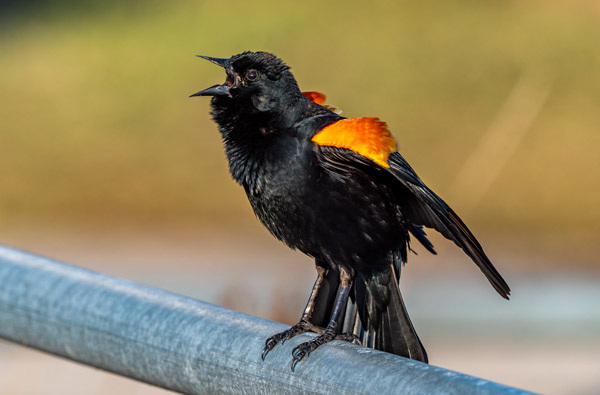
DIET
Red-winged Blackbirds are opportunistic feeders, and their diet consists of a variety of insects, seeds, fruits, and even small vertebrates such as frogs and fish. They are also known to feed on agricultural crops, which can make them a pest for farmers.
MIGRATION
Red-winged Blackbirds are a migratory species, and during the non-breeding season, they can be found in a wider range of habitats, including woodlands, fields, and even suburban areas.
Their migration patterns vary depending on the location, with northern populations typically migrating further south than those in the southern parts of their range.
REPRODUCTION
The breeding season for Red-winged Blackbirds typically begins in late April or early May, and they typically build their nests in tall grasses or reeds, using plant material to construct a cup-shaped nest.
The female typically lays 3-5 eggs, which are pale blue or green in colour and speckled with brown. Both parents take turns incubating the eggs, and once they hatch, the parents feed the nestlings a diet of insects, spiders, and other invertebrates.
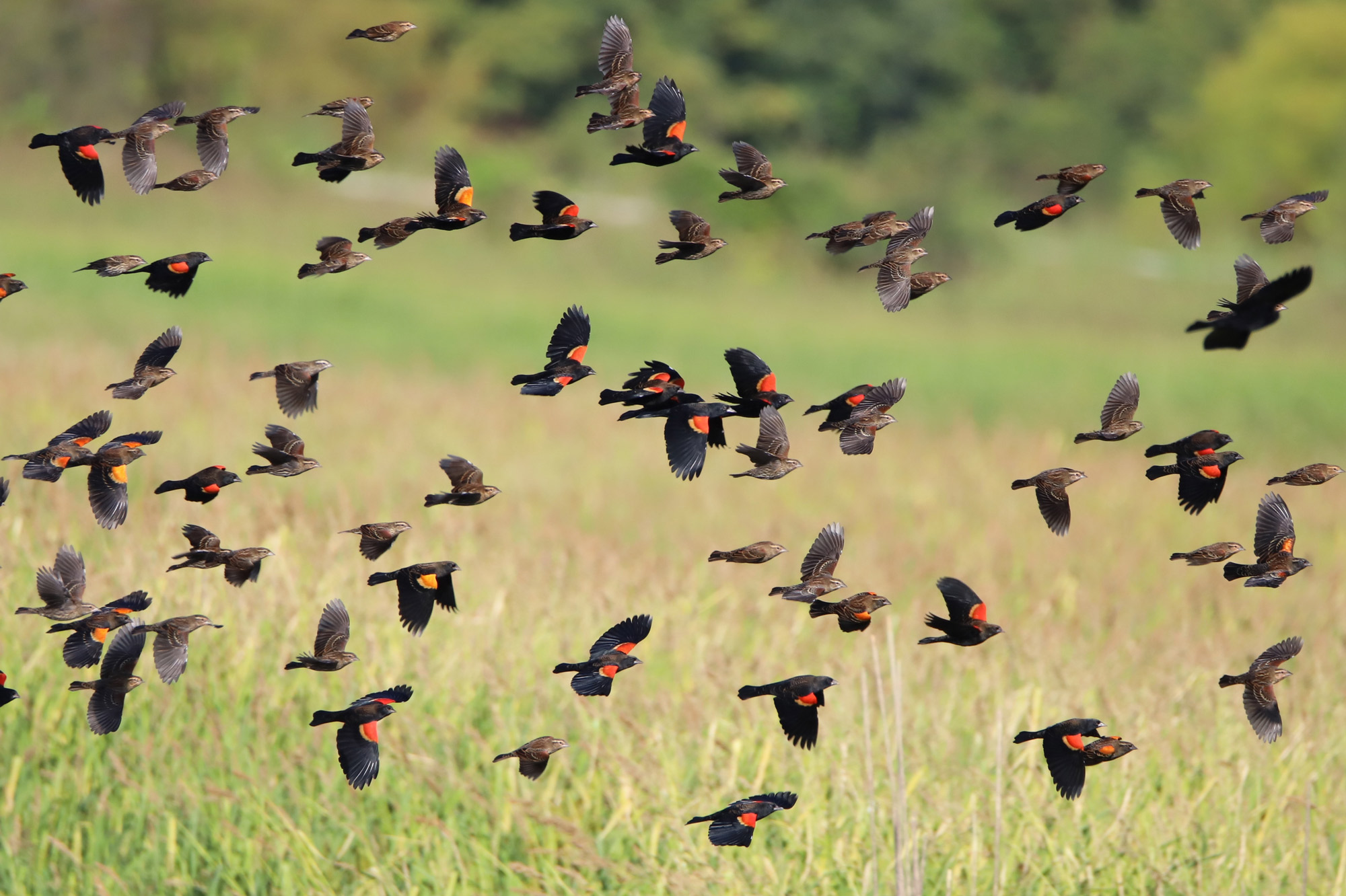
POPULATION
Red-winged Blackbirds are a common and widespread species, and their populations are stable. However, like many bird species, they are facing some threats.
Habitat loss, fragmentation, and degradation are among the major threats to the population of Red-winged Blackbirds, as well as pesticide use which can reduce the availability of insects, which are an important food source for the birds.
CONSERVATION
Despite these threats, conservation efforts have successfully protected and preserved Red-winged Blackbird populations. For example, conservation programs have been implemented to restore and protect wetland habitats, which are important bird breeding and feeding areas. Also, farmers are advised to reduce pesticide use to protect Red-winged Blackbirds and other bird species that feed on insects.
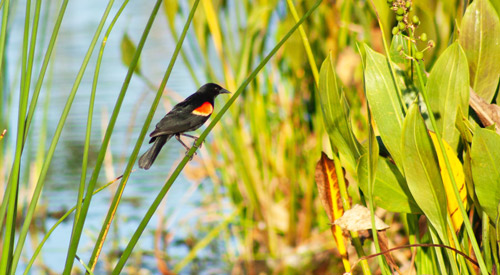
SYMBOLISM
In addition to their ecological importance, Red-winged Blackbirds also hold cultural and symbolic significance for many people.
For example, for many Indigenous peoples in North America, the Red-winged Blackbird holds spiritual significance and is seen as a messenger between the natural and spiritual worlds. In fact, they are also revered for their striking plumage and vocalizations, which are often incorporated into traditional music, art, and dance.
POPULAR SUBJECT
Red-winged Blackbirds are also a popular subject in literature and poetry, with their striking plumage, loud vocalizations and aggressive territorial behavior making them an ideal symbol for themes such as freedom, power, and determination.
Their seasonal migration also makes them an evocative symbol of the passage of time and the changing of seasons.

RESEARCH
In recent years, citizen science programs have also played an important role in studying and monitoring Red-winged Blackbird populations.
These programs allow members of the public to submit observations of the birds, which can be used to track population trends, identify migration patterns, and monitor breeding activity. This data is crucial for understanding the species’ status and guiding conservation efforts.
HOW TO HELP THE RED-WINGED BLACKBIRD?
In addition to the conservation efforts mentioned earlier, there are also other ways that individuals can help to support Red-winged Blackbird populations.
For example, providing a suitable habitat in your backyard can be a great way to support the birds. This can include planting native grasses and wildflowers, which provide food and cover for the birds, as well as creating a pond or wetland area, which can provide a breeding and feeding habitat.
REDUCING PESTICIDE
Another way to support Red-winged Blackbirds is by reducing pesticide use in your garden and yard.
Pesticides can be harmful to birds and their food sources, so using organic gardening practices and reducing the use of chemicals can help to protect the birds and other wildlife in your area.
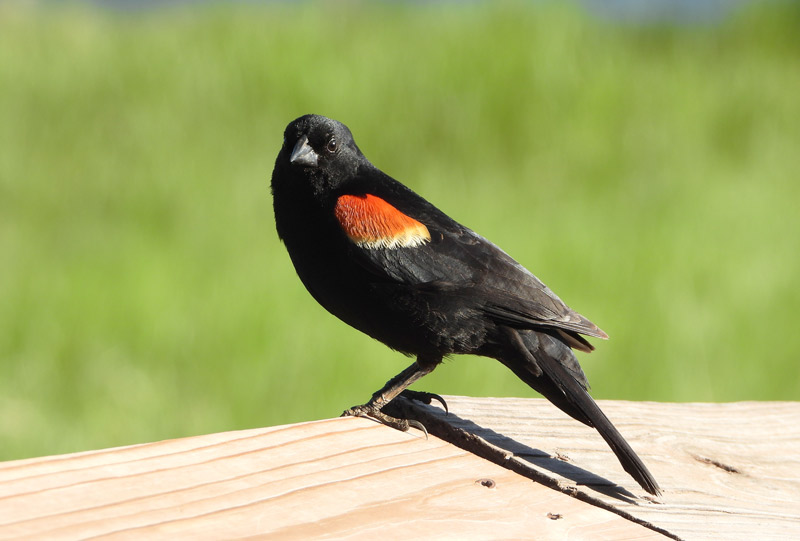
SCIENCE PROGRAMS
Individuals can also support Red-winged Blackbirds by participating in citizen science programs, such as the North American Breeding Bird Survey, which helps to track population trends and monitor breeding activity. By submitting observations of the birds, you can contribute valuable data to help guide conservation efforts.
Lastly, supporting organizations that work to protect and conserve Red-winged Blackbirds and their habitats is another way to help support the species.
This can include organizations such as eBird, the Audubon Society, the Nature Conservancy, and Wetlands International, which work to protect and restore habitats, reduce threats to the birds, and raise awareness about the importance of conserving these species.
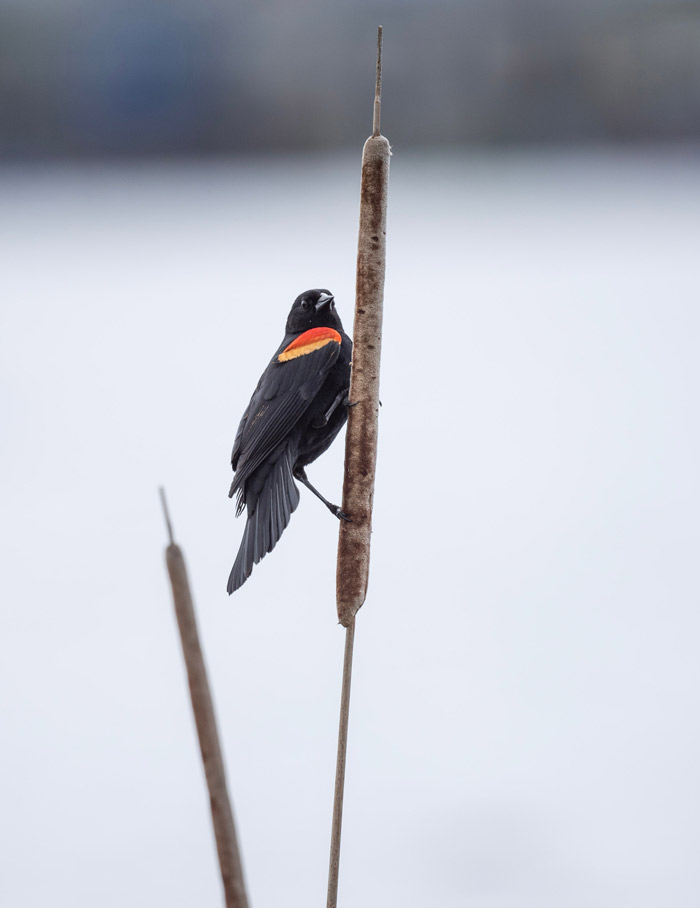
BREEDING BEHAVIOR
Another important aspect to consider when discussing the Red-winged Blackbird is their behavior during the breeding season. During this time, males establish and defend territories where they attract females to breed.
They are known for their elaborate and loud displays, which include singing, wing flashing, and aerial displays. These displays serve to advertise the male’s fitness to potential mates and to intimidate and drive away other males.
Females, on the other hand, are responsible for constructing the nest and incubating the eggs. Once the eggs hatch, both parents work together to feed and care for the nestlings. The young fledge (leave the nest) after about two weeks and can forage for food on their own.
POLYGYNOUS
Red-winged Blackbirds are also known for their polygynous mating system, where a single male can mate with several females.
This behavior is known to be influenced by resource availability, with males with better territories or food sources being able to attract and breed with more females.
In summary, the Red-winged Blackbird is a fascinating and important species that holds both ecological and cultural significance. Their striking plumage, loud vocalizations, and aggressive territorial behaviour make them an iconic symbol of the natural world. They play an important role in their ecosystem, but they are facing some threats such as habitat loss and pesticide use. Conservation efforts and individual actions can help to protect and conserve the Red-winged Blackbird, and its breeding, feeding and roosting habitats. By working together, we can ensure that Red-winged Blackbirds will continue to thrive in the wild for many years to come.

